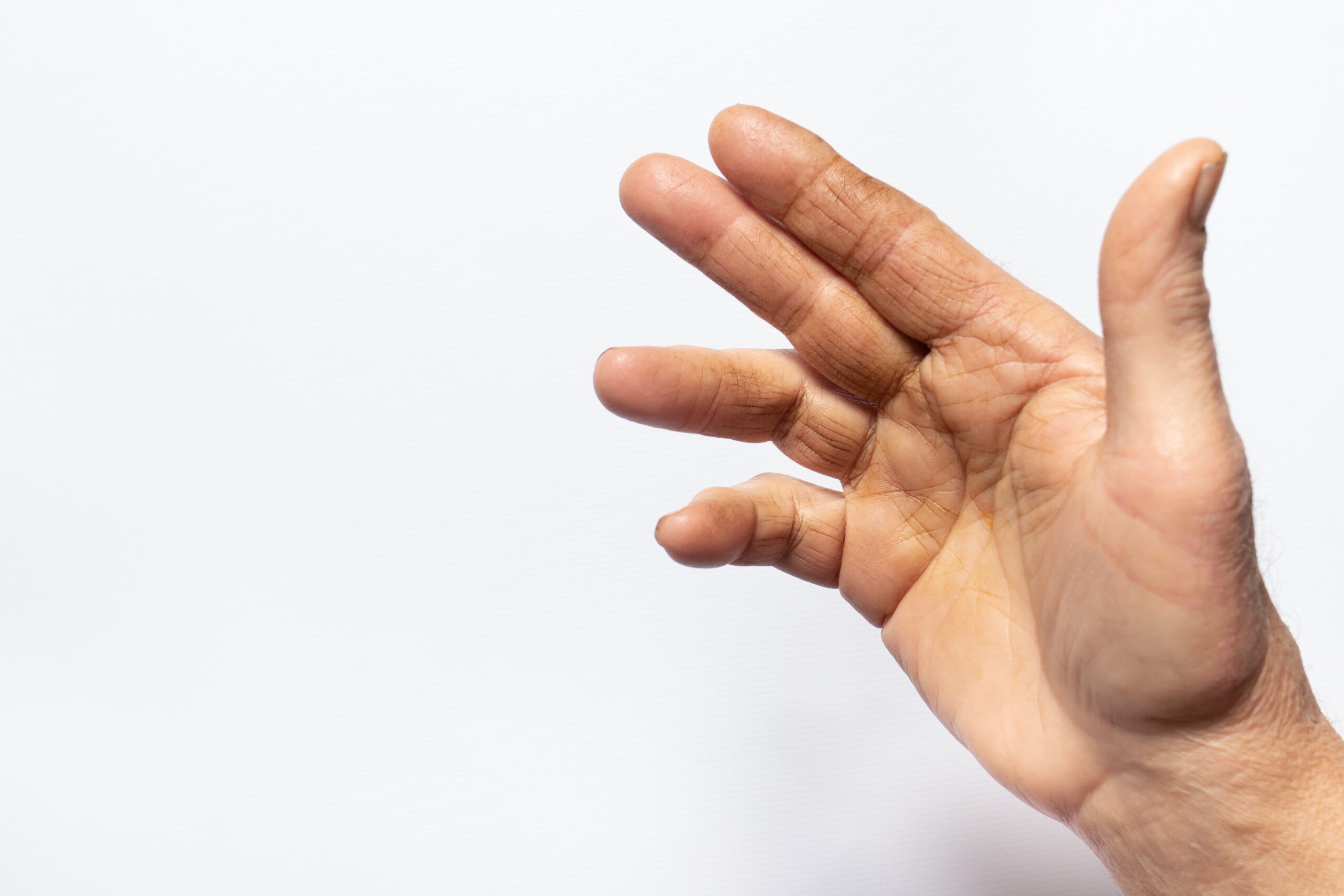Dupuytren’s contracture is a condition that causes the tissue in one’s hand to gradually form a thick cord that makes some of the fingers bend. The contractures may occur in one or more fingers. Patients with the condition often experience symptoms in both hands.
Dupuytren’s contracture can make life more challenging. If you suspect you or a loved one may be suffering from Dupuytren’s contracture, it’s a good idea to learn about the causes, symptoms and treatments of this condition.
What Causes Dupuytren’s Contracture?
While doctors are still not entirely sure why some patients develop Dupuytren’s contracture, many suspect there is a hereditary component. Dupuytren’s contracture also seems to be closely associated with one’s overall health and may be influenced by lifestyle choices like alcohol consumption, smoking cigarettes, nutrition and diabetes rather than physical stress or past hand trauma.
What Are the Symptoms of Dupuytren’s Contracture?
The symptoms of Dupuytren’s contracture typically worsen with time. Recognizing the signs early may help your doctors diagnose Dupuytren’s contracture sooner. Fast diagnosis and treatment in the condition’s early stages may save patients substantial pain and suffering.
Difficulty Straightening Fingers
If there is significant resistance when patients attempt to lie their hand palm down and flat on a surface, it may be a sign of contractures. Patients with Dupuytren’s contracture may experience difficulty performing some tasks because their fingers are stuck in a flexed position.
Bumps/Knots Form in Palm
Many patients notice one or more small knots on their palm. Initially, the bumps may be sore, but this pain will often subside over time. The lumps may gradually tighten, which causes tough bands to appear in the palm.
How Is Dupuytren’s Contracture Diagnosed?
Most doctors only need to examine a patient’s hands to diagnose Dupuytren’s contracture. They will typically ask patients to flatten their palms on a table or desk. The hands are also usually inspected for thick knots. Doctors measure the range of motion in the hands because flexibility and dexterity is a good indicator of how Dupuytren’s contracture is progressing. Ongoing analysis allows a doctor to monitor the effectiveness of treatments. Doctors may also check a patient’s grip or pinch strength to gauge the condition’s severity.
How Can Dupuytren’s Contracture Affect My Life?
Since the progression of Dupuytren’s contracture is so slow, the consequences may not seem overly serious, at least not in its early stages.
If the symptoms continue to go untreated, they could have a considerable impact on your quality of life, potentially interfering with your ability to perform some of the following tasks:
- Writing
- Carrying objects
- Twisting jar lids or knobs
- Bathing
- Getting dressed
- Shaving
- Brushing your teeth
- Combing and drying your hair
- Securely gripping items
- Wearing gloves
- Putting your hands in your pockets
- Changing lightbulbs
- Cooking
- Eating
- Cleaning
- Yardwork
- Holding or shaking someone’s hand
How Is Dupuytren’s Contracture Treated?
There are surgical and non-surgical options for treating Dupuytren’s contracture. The best treatment often depends on each patient’s unique circumstances. Some of the determining factors are the patient’s age and health, the severity of the symptoms and the patient’s preferences.
Surgery
Patients with advanced Dupuytren’s contracture symptoms, like limited use of their hands, generally require surgical intervention to help them regain some hand dexterity. Surgeons may be able to restore some movement by cutting into the hand and removing the cords of tissue. If the contractures come back, additional surgery is usually needed.
Get Dupuytren’s Contracture Treatment at Centennial Orthopedics
Have you noticed knots on your palm or decreased flexibility or hand dexterity? If you have, you may want to ask your doctor about Dupuytren’s contracture. To learn more about Dupuytren’s contracture treatments in Roseburg, contact the Centennial Orthopedics team. Call us at 541-229-2663 to schedule an appointment.
